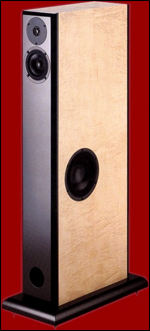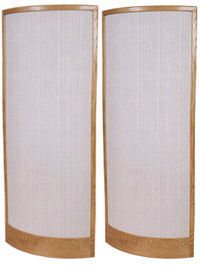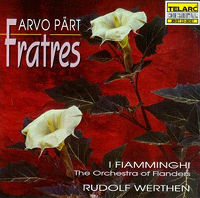LATEST ADDITIONS
Audio Physic Virgo loudspeaker
The Sears guy came to our basement the other day to check out the water heater. Staring at the walls of LPs and tiptoeing through the piles of CDs strewn on the floor, he exclaimed, "What the heck are you? A disc jockey?" So I told him.
Proceed PAV audio/video preamplifier
Until just recently, only companies known primarily for their surround-sound processors were producing the most advanced—and most expensive—Home Theater products. No longer. It was inevitable that traditional high-end audio manufacturers would begin producing equipment for this fast-growing market.
Berning EA-2101 power amplifier
It was back in the mid-'70s that David Berning made a name for himself in the Baltimore-Washington area as an avant-garde designer—someone with a truckload of fresh ideas about tubes. At the time, though Audio Research was starting to crank out pretty decent amplifiers, tube design was pretty much reduced to a rehash of the Williamson circuit and the Dynaco mod of the month.
Celestion SL700 loudspeaker
Acoustic Energy AE1 loudspeaker
"<A HREF="http://www.Stereophile.com//features/44/">Who Stole The Bass?</A>" asked Anthony H. Cordesman, writing about minimonitors in the April/May 1987 <I>Stereophile</I> (Vol.10 No.3). And for the designer of a box loudspeaker, the fundamental design decision, at any price level, is how much bass extension to aim for. It will always be possible to design a speaker with extension down to 20Hz, but will the result be musically and commercially successful? Will the designer end up with a speaker hypertrophied in that one area at the expense of every other? Will, indeed, the result be feasible technically? For example, for a given cabinet volume, gains in low-frequency extension have to be balanced against corresponding drops in sensitivity, and it is quite possible that to go for 20Hz extension will result in a 60dB/W/m sensitivity, equating with a speaker that only plays <I>extremely</I> quietly, and thus of no use to anyone.
Sound-Lab A-3 loudspeaker
The Sound-Lab electrostatic loudspeakers are legendary. Many serious audiophiles have heard of them, and rumors of their existence abound in audio circles. But, like gnomes, UFOs, and poltergeists, Sound-Lab loudspeakers are sufficiently hard to find that it is sometimes difficult to prove to skeptics that they exist at all. Well, I can now report that they <I>do</I>. As proof of this contention, I can point to the two which are actually occupying solid, tangible space in my listening room at this very moment. I have even taken a photo of them, which will be published along with this report if they leave any sort of an image on the film emulsion. (Many such apparitions do not!)
Recording of August 1995: Pärt: Fratres
<B>PÄRT: <I>Fratres</I></B><BR> <I>Fratres</I> for strings & percussion; <I>Fratres</I> for violin, strings, & percussion; <I>Fratres</I> for wind octet & percussion; <I>Fratres</I> for eight cellos; <I>Fratres</I> for strings; <I>Fratres</I> for string quartet; <I>Fratres</I> for cello & piano. Plus: <I>Cantus in Memory of Benjamin Britten</I>, <I>Summa</I>, <I>Festina Lente</I><BR>Rudolf Werthen, I Fiamminghi (The Orchestra of Flanders)<BR> Telarc CD-80387 (CD only). James Mallinson, prod.; Jack Renner, Tony Faulkner, engs. DDD. TT: 79:00
Thiel CS1.5 loudspeaker
Audio Research SDP1 multichannel music processor
For those of us who have succumbed to the enticements of surround-sound for music, Audio Research's SDP1 is both vindication and cause for rejoicing: vindication because surround-sound's acceptance by such an ultraconservative, uncompromising company as ARC will give it a respectability in the high-end community that it never enjoyed before, and cause for rejoicing because someone has finally done music surround right.




